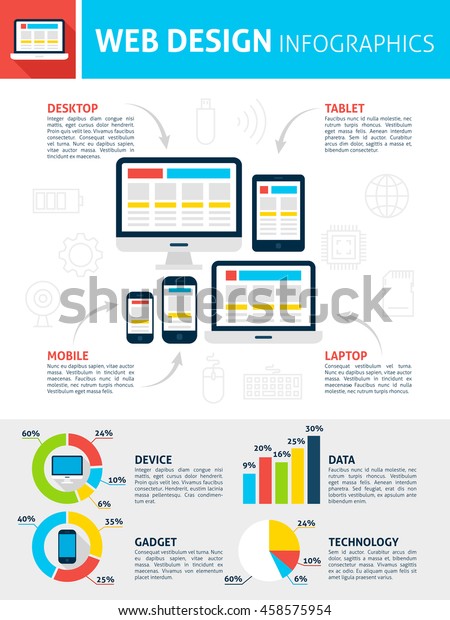Intrigued In Learning Exactly How Web Site Style Has Changed Throughout The Years? Discover The Development From Standard, Straightforward Layouts To User-Centered Strategies That Prioritize The Needs And Preferences Of On The Internet Site Visitors
Intrigued In Learning Exactly How Web Site Style Has Changed Throughout The Years? Discover The Development From Standard, Straightforward Layouts To User-Centered Strategies That Prioritize The Needs And Preferences Of On The Internet Site Visitors
Blog Article
Short Article Developed By-Dalrymple Gibbons
In the past, web sites were straightforward and concentrated on information. Navigation was straight, and design was for desktops. Now, user experience is vital. Data guides layouts for easy navigating. Receptive layouts fit various gadgets. Today, dark mode minimizes strain, and minimal food selections enhance navigation. Interactive features involve customers, and strong visuals attract attention. AI integration improves interaction. See how design has progressed to enhance your on the internet trip.
Very Early Days of Web Design
In the very early days of website design, simpleness preponderated. Websites were basic, with restricted shades, fonts, and formats. The focus was on providing information rather than fancy visuals. Individuals accessed the net through slow-moving dial-up links, so rate and performance were key.
Navigating food selections were straightforward, typically located on top or side of the page. Internet sites were designed for home computer, as mobile surfing had not been yet prevalent. Material was king, and developers focused on easy readability over complicated design components.
HTML was the primary coding language utilized, and designers had to function within its restraints. Computer animations and interactive attributes were marginal compared to today's criteria. Websites were static, with little vibrant material or personalized individual experiences.
Surge of User-Focused Layout
With the development of internet site style, a change towards user-focused layout concepts has actually come to be significantly famous. recommended , producing internet sites that focus on customer experience is crucial for involving visitors and achieving company objectives. User-focused layout involves comprehending the demands, choices, and habits of your target audience to tailor the internet site's design, content, and includes as necessary.
Designers currently perform comprehensive research, such as individual surveys and functionality screening, to gather insights and feedback straight from customers. This data-driven technique assists in creating instinctive navigating, clear calls-to-action, and visually appealing user interfaces that reverberate with site visitors. By putting the user at the facility of the design procedure, internet sites can supply an extra individualized and delightful experience.
Receptive layout has likewise emerged as a key element of user-focused style, ensuring that websites are maximized for numerous devices and display sizes. This adaptability boosts accessibility and functionality, satisfying the diverse ways customers connect with sites today. Essentially, wordpress managed hosting of user-focused design symbolizes a change towards producing electronic experiences that focus on the requirements and assumptions of the end individual.
Modern Trends in Website Design
Discover the most recent trends shaping web design today. One popular fad is dark setting design, providing a sleek and contemporary appearance while minimizing eye stress in low-light settings. Another essential fad is minimal navigating, simplifying menus and boosting individual experience by focusing on essential elements. Including micro-interactions, such as computer animated buttons or scrolling results, can develop a much more interesting and interactive internet site. Responsive style stays crucial, ensuring smooth individual experiences throughout different gadgets. Furthermore, making use of bold typography and unbalanced designs can include aesthetic interest and accentuate specific material.
Incorporating AI technology, like chatbots for client assistance or individualized recommendations, boosts individual interaction and improves processes. Ease of access has likewise end up being a significant pattern, with developers prioritizing comprehensive design practices to accommodate varied individual requirements. Embracing sustainability by maximizing web site efficiency for speed and efficiency is one more emerging trend in web design. Teaming up with user comments and data analytics to repeat and boost style continually is essential for remaining pertinent in the ever-evolving electronic landscape. By accepting https://whatisvideomarketingandwh32109.blogrelation.com/35924034/approaches-for-effective-ppc-with-reliable-search-phrase-research-study -day trends, you can produce a visually attractive, user-friendly site that reverberates with your target market.
Final thought
As you review the advancement of site design from the very early days to now, you can see exactly how user-focused style has actually ended up being the driving pressure behind modern fads.
Embrace the trip of adjustment and adaptation in web design, always keeping the customer experience at the center.
Keep existing with the latest patterns and technologies, and never stop evolving your method to produce aesthetically sensational and straightforward sites.
Progress, adapt, and develop - the future of web design is in your hands.
